Well, which is it then? Come and explore the Bavarian capital with us – also against the grain. We give you an outline of the classic places, communities and events that are an intrinsic part of the city profile – and we redraw the contours by challenging a few clichés.
By Manon Hopf and Elisa Jochum
“In München steht ein Hofbräuhaus”
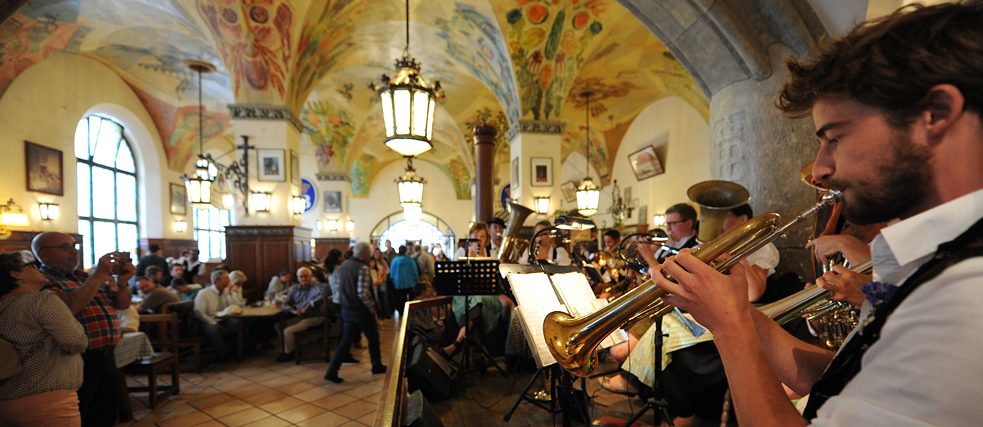 Musicians at Hofbräuhaus | Photo (detail): © picture alliance/Sueddeutsche Zeitung Photo
Musicians at Hofbräuhaus | Photo (detail): © picture alliance/Sueddeutsche Zeitung Photo
The tavern Staatliches Hofbräuhaus, which is more than 400 years old, is located on the Platzl in Munich’s Old Town. Probably the best known part of the Hofbräuhaus is the “Schwemme”, a large beer hall that can accommodate around 1,000 guests at its wooden tables. It’s also home to the famous “Maßkrugtresore” (safes for steins), in which regulars can lock up their beer mugs. The residents of Munich love their beer, which has been at the ready in difficult times, too: when the Munich Opera House went up in flames in Winter 1823, the water to extinguish the fire had frozen – and so they put it out with beer. The Hofbräuhaus isn’t just for lovers of oompah bands, it’s also of interest to the historically-minded. This is where the Workers and Soldiers’ Council declared the communist “Räterepublik” in 1919, although it only lasted less than a month. Barely a year later the NSDAP (National Socialist German Workers’ Party) was founded in the same place where Adolf Hitler presented their party manifesto. However today Staatliches Hofbräuhaus am Platzl is primarily known as a tourist attraction, and its fame has travelled the globe: there’s even a replica of the building in Las Vegas.
Of oxen and carrots
 Inges Karotte | Photo (detail): © picture alliance/Sueddeutsche Zeitung Photo
Inges Karotte | Photo (detail): © picture alliance/Sueddeutsche Zeitung Photo
Two of Munich’s districts, Glockenbachviertel and neighbouring Gärtnerviertel, are famous for their lesbian and gay scenes. Munich has been developing as a centre for the German gay movement since the fifties. Later the Glockenbachviertel became known as a focal point of the rock ‘n’ roll and twist scenes: even Freddie Mercury is said to have danced a night or two away here, in venues such as the Ochsengarten (literally: “ox garden”). This bar ranks as the first leather and fetish bar in Germany. Inges Karotte (literally: “Inge’s carrot”) was an institution, too – as Munich’s oldest lesbian bar. But an increasing number of scene pubs in Munich are closing. One reason for that might be the strong competition through dating apps.
Deer antler meets regional pear varieties
 Maypole on Viktualienmarkt | Photo (detail): © picture alliance/imageBROKER
Maypole on Viktualienmarkt | Photo (detail): © picture alliance/imageBROKER
Nowadays, hardly anyone still uses the old-fashioned term “victuals” for their daily groceries. But everyone in Munich is familiar with the Viktualienmarkt. Six days a week you can find open stalls here – or “Standl” as Bavarians call them. Alongside vegetables and flowers, they accommodate countless specialities – ranging from mead to legs of pork in aspic. Not only that, but this market with its centuries of tradition turns the seasons upside down, too: the maypole towers over the roofs of the market stalls for the other eleven months of the year as well, and, curiously, you can buy Christmas ornaments even in the summer.
Social and multicultural
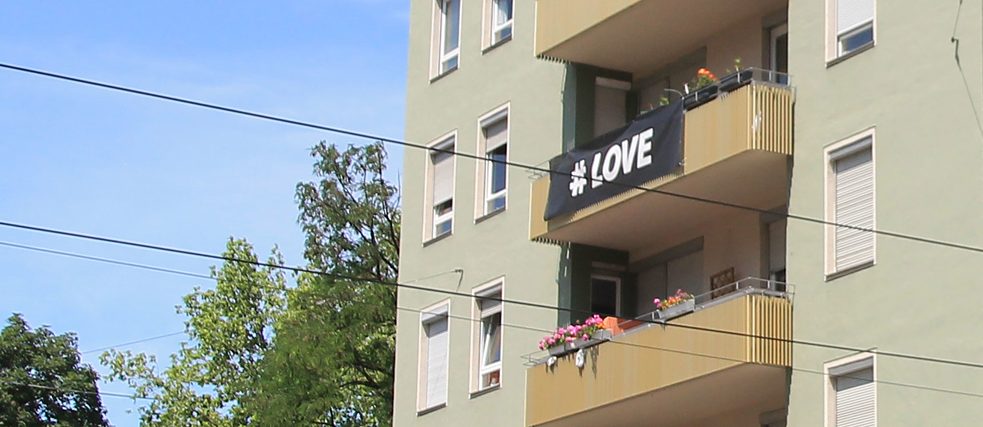 Bellevue di Monaco | Photo (detail): © Goethe-Institut e. V., online editorial office
Bellevue di Monaco | Photo (detail): © Goethe-Institut e. V., online editorial office
Munich has a reputation characterised by prosperity. The exclusive and eccentric upper class, the so-called “Schickeria”, readily carries this image to extremes. The Bellevue di Monaco – a centre for multicultural living and culture, as well as an alliance for refugees and citizens of Munich – breaks with the cliché. In the attached café, refugees and voluntary workers roll up their sleeves alongside one another and make sure that the business runs at a profit. The café emphasises the social and inclusive idea behind the affordable prices at this “place for everyone”. For the centre, its own success is proof that it isn’t (always) about money in Bavaria’s capital: Munich’s citizens are aware that birthplace is a matter of luck, and they are committed to helping people who had to flee from war and misery – right in the city centre where there is hot competition for space. Aptly enough the Italian-French name Bellevue di Monaco, which seems like an international hotel name, is meant to refer to a divide in our society: the divide between casually jetting off to the most magnificent hotels on the one hand, and migration out of necessity and externally controlled accommodation of many refugees on the other. The people who run the Bellevue di Monaco are certain: everyone deserves a “beautiful view”.
Would you like to learn more? Watch Rahel's visit to the Bellevue di Monaco here.
Perfect wave
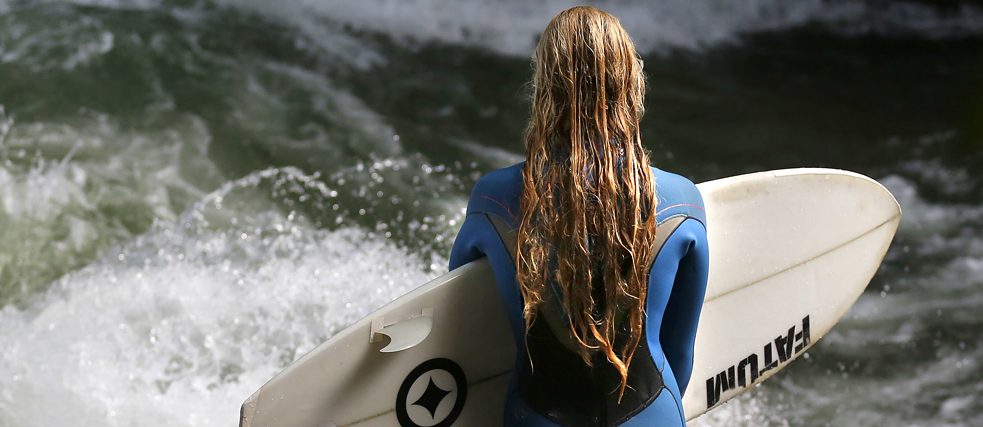 Surfer at Eisbachwelle | Photo (detail): © picture alliance / Mika
Surfer at Eisbachwelle | Photo (detail): © picture alliance / Mika
The Englischer Garten in Munich is a sight to behold. Tourists enjoy taking endless pictures of the Chinesischer Turm, as well as gazing across wide swathes of the city from the Monopteros, the little temple at the top of a hill in the garden. Both locals and tourists crowd along the banks of the Eisbach river to catch a glimpse of the surfers. The Eisbachwelle, a standing wave where the river comes out near Prinzregentenstraße, isn’t just well known to local surfers. Even top international surfers have been here, including Jack Johnson. And if you’re not confident enough to go on the big wave, you can try your luck on the smaller one about a kilometre downstream. Wave-riding on the Eisbach was illegal for a long time, but even though it’s officially tolerated you still need to be careful: falls and injuries happen all the time. If you ride the wave, you’re taking a risk – and even the people watching might get wet.
Naked tRuth
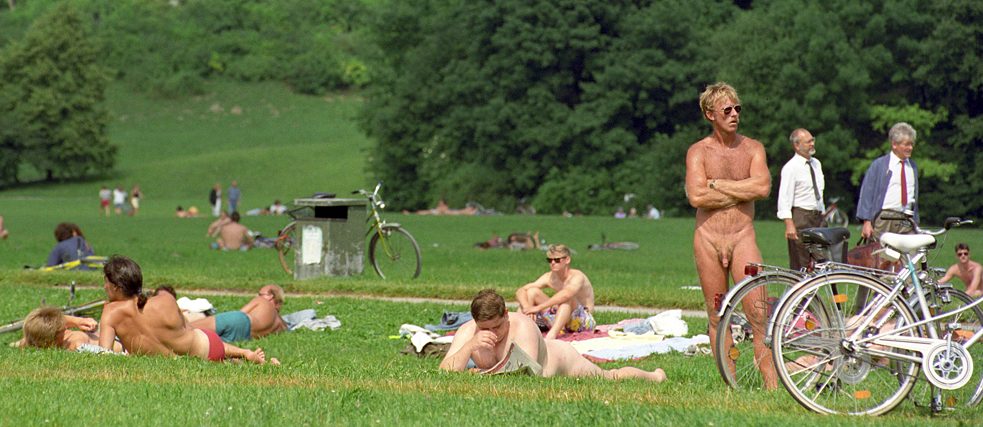 In the nude at Englischer Garten | Photo (detail): © picture alliance / Martina Hellmann
In the nude at Englischer Garten | Photo (detail): © picture alliance / Martina Hellmann
You think Munich is prim? Not where naked skin in public is concerned – “Freie Körperkultur”, or “FKK” for short. FKK and skinny-dipping are allowed here – right in the city centre, or at least in designated areas. These include sections of the Isar bank and parts of the Englischer Garten. Many open-air swimming pools also have FKK areas, and topless bathing is officially allowed in the Isar. There are even rumours that FKK bathers who have floated down the Eisbach were permitted to use the streetcar, stark naked and without a ticket, to travel back and collect their stuff. A nudist culture was developing in Germany already around 1900 – although nowadays people are more familiar with pictures from the GDR, where skinny-dipping was generally considered to be normal. In West Germany it mainly became fashionable with the 1968 generation and the fitness boom in the eighties and nineties. But the naked bathers are becoming fewer all the time – at least they are more of a rarity on the streetcar.
Where the hare and the hedgehog say “goodnight” to Ludwig
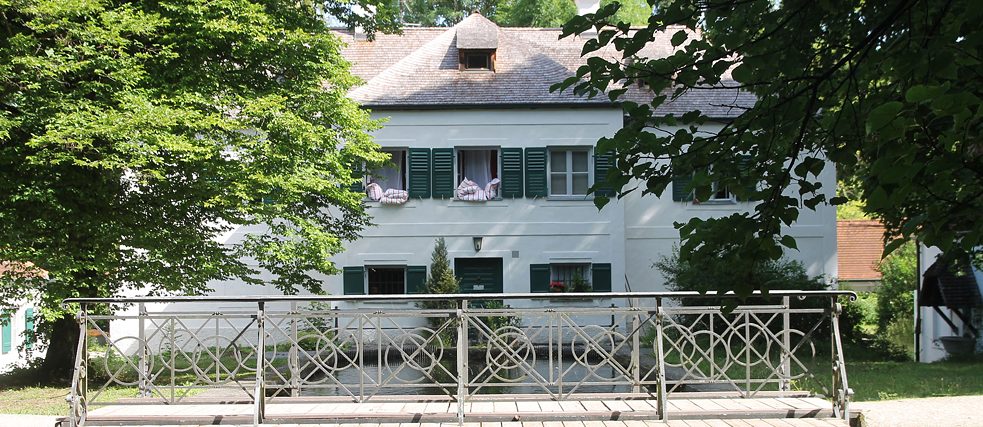 Brunnhaus in Park Nymphenburg | Photo (detail): © Goethe-Institut e. V., online editorial office
Brunnhaus in Park Nymphenburg | Photo (detail): © Goethe-Institut e. V., online editorial office
A nymph is a goddess of nature in ancient Greek culture. Nature and culture – these two epithets sum up the castle and park of Nymphenburg. Constructed during the 17th and 18th centuries, the former royal residences can now be found in every city guide. This is where Ludwig II was born, the legendary Bavarian king, who later had the even more famous castle Neuschwanstein built. Behind Schloss Nymphenburg the green parkland extends over approximately 180 hectares – in some areas it’s wild and adventurous with diverse wildlife, and in others every centimetre is cultivated and curated with precision. The Grünes Brunnhaus, or “Green Pump House”, has feather bedding on its windowsills, reminiscent of the fairy tale
Frau Holle. But its purpose is not so much fantastical as visionary: the pumps that power one of the fountains in the park were the epitome of progress in the 19th century. This gives rise to a third epithet for this nature idyll from long ago, which appears puzzling only at first glance: high-tech.
Alternative living
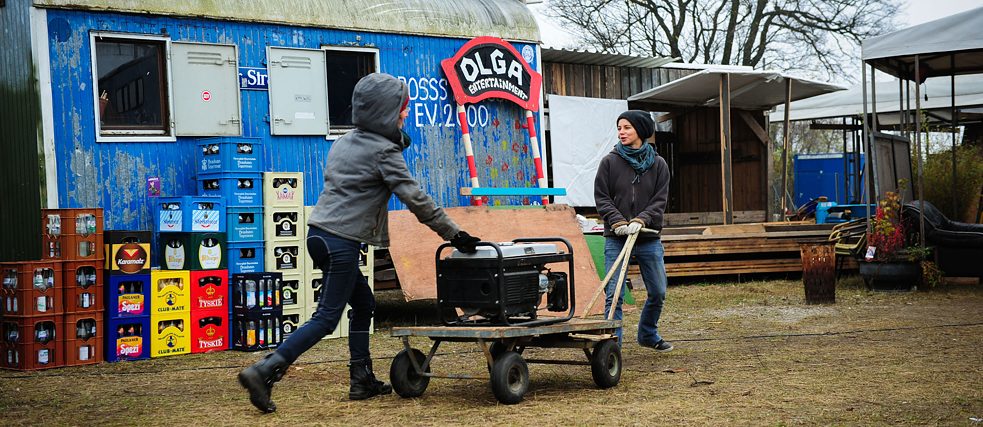 Stattpark Olga | Photo (detail): picture alliance / Sueddeutsche Zeitung Photo
Stattpark Olga | Photo (detail): picture alliance / Sueddeutsche Zeitung Photo
Munich is considered traditional. By contrast Stattpark Olga seems like a fairground. And indeed: Olga does dispel prejudice and clichés. As a space for alternative living and culture, residents of the caravan park have made this into a place for meeting and being together. They organise their lives based on a grass-roots democracy, in a community practising environmental awareness, using solar power and rainwater, cultivating vegetables and bringing the city’s brownfield sites back to life. Private and public spaces overlap here – as a cultural centre, the caravan park is open to guests and offers a varied events programme: film evenings, discussions, concerts and projects with a focus on sustainability, such as the sewing café.
Lost in art
 Joseph Karl Stieler’s "Johann Wolfgang von Goethe", Neue Pinakothek | Photo (detail): © picture alliance / Daniel Kalker
Joseph Karl Stieler’s "Johann Wolfgang von Goethe", Neue Pinakothek | Photo (detail): © picture alliance / Daniel Kalker
Munich’s museum quarter, the Kunstareal, lies right in the heart of the city. There are countless museums, galleries, exhibition centres and universities congregated all around the Königsplatz. These include the Pinakothek picture galleries, consisting of the Alte and Neue Pinakothek, the Pinakothek der Moderne, the Museum Brandhorst and the Sammlung Schack. You can marvel at art from the Middle Ages, throughout the Renaissance and Baroque periods and right up to Rococo in the Alte Pinakothek. The Neue Pinakothek, Europe’s oldest museum of contemporary art, contains major works from the genres of Neoclassicism, Romanticism, Jugendstil and Impressionism, as well as pioneers of Modern Art. Almost opposite these is a collection of four museums, showcasing art, graphics, architecture and design from the 20th and 21st centuries all under one roof – the roof belonging to the Pinakothek der Moderne. There’s a place for the next generation of artists here, too: every Sunday children are invited to draw, paint and do crafts together. Furthermore the museums can be explored by following discovery trails. The Sammlung Schack doesn’t just inspire children to dream and fantasise, but grown-ups as well: paintings of myths and fairy tales are on display here. The Museum Brandhorst on the other hand is primarily known for its architecture and exhibitions of works by Andy Warhol. The Pinakotheken are not just a repository, a place filled with history – they are living, accessible places of art. Once you’re enthralled, it’s hard to find your way back out – and this influence extends through centuries of art history.
Of reading and demonstrating
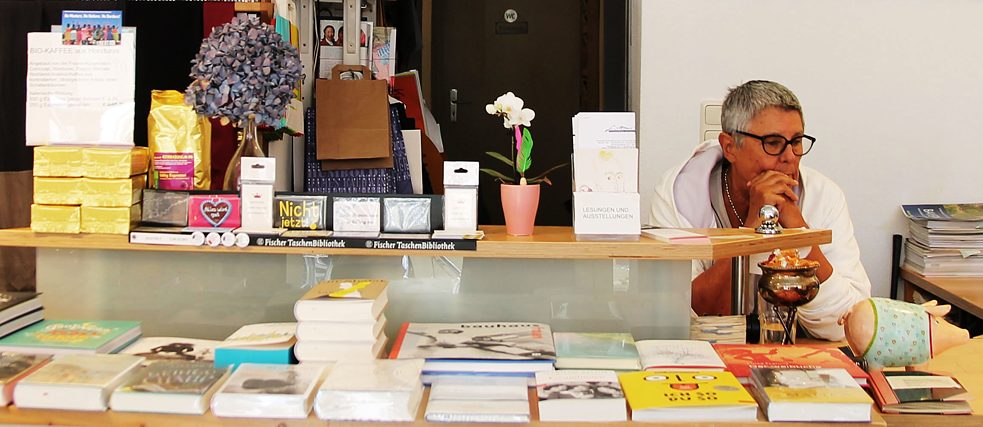 Lillemors Frauenbuchladen | Photo (detail): © Goethe-Institut e. V., online editorial office
Lillemors Frauenbuchladen | Photo (detail): © Goethe-Institut e. V., online editorial office
Resistance, youth, lesbians – these are just some of the categories she can find in Lillemors, the oldest women’s bookshop in Germany. In 1975, during the feminist movement, the six female founders tasked themselves with securing women an empowered position in the city’s profile and in society. For a while only “she” had access: it was a place run by women for women, a meeting point for cultural interaction and political action. It’s impossible to imagine Munich without the award-winning bookseller now – and men are welcome there, too, these days. The bookshop is not just committed to raising the visibility of female authors, but also of female artists. Demonstrations are no longer organised here as they were in the early days, but it’s clear from the product range: the store managers find there is still lots to do for feminism in the 21st century.
City Contours
Allotments in Berlin or skinny-dipping in Munich: come and explore some German cities with us – also against the grain. We give you an outline of the classic places, communities and events that are an intrinsic part of the city profile – and we redraw the contours by challenging a few clichés.

 Musicians at Hofbräuhaus | Photo (detail): © picture alliance/Sueddeutsche Zeitung Photo
Musicians at Hofbräuhaus | Photo (detail): © picture alliance/Sueddeutsche Zeitung Photo
 Inges Karotte | Photo (detail): © picture alliance/Sueddeutsche Zeitung Photo
Inges Karotte | Photo (detail): © picture alliance/Sueddeutsche Zeitung Photo
 Maypole on Viktualienmarkt | Photo (detail): © picture alliance/imageBROKER
Maypole on Viktualienmarkt | Photo (detail): © picture alliance/imageBROKER
 Bellevue di Monaco | Photo (detail): © Goethe-Institut e. V., online editorial office
Bellevue di Monaco | Photo (detail): © Goethe-Institut e. V., online editorial office
 Surfer at Eisbachwelle | Photo (detail): © picture alliance / Mika
Surfer at Eisbachwelle | Photo (detail): © picture alliance / Mika
 In the nude at Englischer Garten | Photo (detail): © picture alliance / Martina Hellmann
In the nude at Englischer Garten | Photo (detail): © picture alliance / Martina Hellmann
 Brunnhaus in Park Nymphenburg | Photo (detail): © Goethe-Institut e. V., online editorial office
Brunnhaus in Park Nymphenburg | Photo (detail): © Goethe-Institut e. V., online editorial office
 Stattpark Olga | Photo (detail): picture alliance / Sueddeutsche Zeitung Photo
Stattpark Olga | Photo (detail): picture alliance / Sueddeutsche Zeitung Photo
 Joseph Karl Stieler’s "Johann Wolfgang von Goethe", Neue Pinakothek | Photo (detail): © picture alliance / Daniel Kalker
Joseph Karl Stieler’s "Johann Wolfgang von Goethe", Neue Pinakothek | Photo (detail): © picture alliance / Daniel Kalker
 Lillemors Frauenbuchladen | Photo (detail): © Goethe-Institut e. V., online editorial office
Lillemors Frauenbuchladen | Photo (detail): © Goethe-Institut e. V., online editorial office